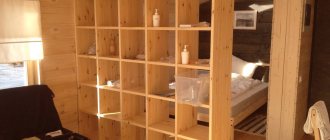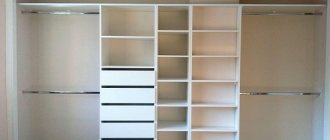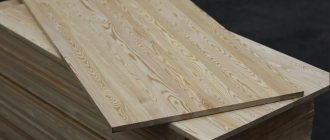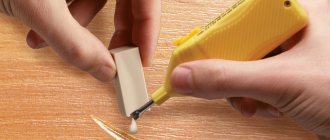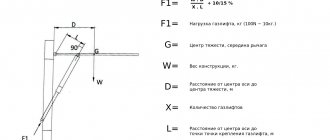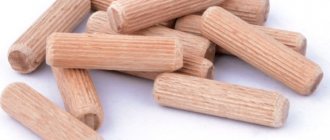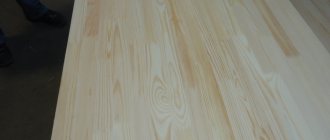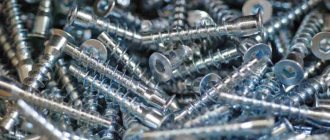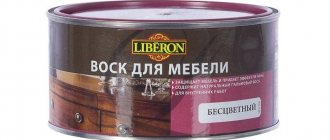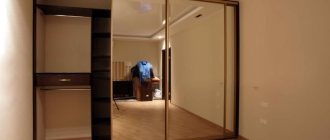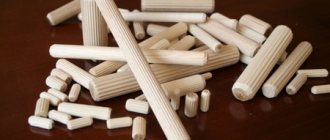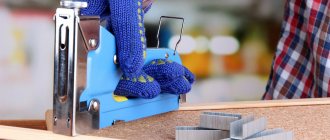How to glue boards into a furniture panel with your own hands
Beginners in furniture making often do not know where to buy furniture panels that suit them.
Samples sold in stores are not always suitable for the planned design. But experienced craftsmen always have wooden boards on hand. With their help, you can easily create a furniture panel yourself if you know the manufacturing technology. To do this you will need glue, a lot of tools and knowledge of step-by-step instructions.
How to glue wooden boards into a board
To properly glue furniture panels , you should first acquire special equipment:
- Planing machine;
- Circular Saw;
- Hammer;
- Thicknesser for drawing marking lines;
- Long ruler, tape measure and pencil;
- Clamps or homemade tools for tightening boards;
- Surface and belt sanders for stripping wood. Instead, you can use sandpaper, screwing the wood onto the block, but cleaning will take more time;
- Electric planer;
- Wooden boards.
- Glue.
To successfully glue boards, it is important to choose high-quality and reliable glue:
- Isofix G818. Professional wood glue made on the basis of polyvinyl acetate. It does not contain solvents, is characterized by high moisture resistance and powerful fixation, used for interior and exterior work, gluing any type of wood. Becomes transparent after drying. Product cost: 232 rubles per 500 ml package.
- Joiner or Super PVA Moment. Heat-resistant, quick-setting and high-strength adhesive designed for gluing all types of wood, chipboard, MTF, DVM, veneer, plywood, fittings and laminate. After drying it becomes transparent. Cost: 330 rubles per 750 ml package.
Instructions - how to glue a shield without clamps and clamps
Once you have all the equipment, tools and suitable glue ready, start gluing the shield. This process consists of several stages.
Preparing the boards
The wood for making shields must be of the same type.
Types of wood that are used to make furniture panels:
- Birch;
- Pine;
- Oak;
- Clear;
- Larch;
- Aspen.
The wood must be dry, smooth and free of knots. It is best to buy ready-made timber and cut it at right angles into pieces of the required size. If there are any unevenness on the bars, use a planer.
The thickness of the boards should be several millimeters greater than the final parameters of the shield, since after gluing and drying they will need to be refined by sanding. To do this, select a workpiece with a width to thickness ratio of 3:1. The boards should be no wider than 15 centimeters so that excessive stress does not arise in them during drying.
Preparation for gluing
Before connecting all the boards, they must first be adjusted so that you get a beautiful shield:
- Build a flat surface so that it is convenient to glue the board from the boards. For this, it is best to use a chipboard sheet;
- Attach the strips to the two edges of the chipboard, adjust their height in accordance with the height of the workpieces;
- Place the boards between the planks so that they fit snugly together. If there are gaps, remove them with a jointer. Carefully examine the wood grain of each specimen. The lines of adjacent blanks should connect smoothly and then the shield will turn out beautiful. To adjust the lines, move the boards along the length;
- After placing the blanks on the chipboard sheet, mark them or mark them with figures so that you can quickly put the board back together.
Gluing process
Once you have adjusted the boards, glue them together one by one.
- Cover the surface to be glued completely with glue. It is important not to apply too much glue, otherwise it will cover the seams. But do not neglect the glue - its deficiency will negatively affect the strength of the shield;
- Press the greased boards firmly one to the other;
- Attach two more planks perpendicularly to the two planks located on both sides of the chipboard and secure them with self-tapping screws. This will avoid bending of the furniture board when gluing;
- To increase the adhesion of the bars, use wedges. Press the boards until the first drops of glue appear on their surface;
- Let the shield dry for about an hour. Then remove it from the surface of the chipboard sheet. Do not touch the material for another day.
VIDEO INSTRUCTION
Final stage
As soon as the homemade furniture board dries, the wood must be sanded, planed and traces of glue removed.
This will give you a smooth and even surface:
- Place coarse sandpaper in the sander to pre-sand;
- Then treat the surface of the shield with a surface grinder;
- If you notice lint, you can get rid of it with a small amount of water. Pour it onto the surface of the furniture board and wait until it dries. After this, the fluff will rise and can be easily removed with sanding equipment.
By following these instructions, you will create a high-quality furniture board that will become an excellent basis for the construction of bedside tables, tables, shelves and many other items for your home.
Technical equipment and its features
To produce furniture panels, the following industrial equipment is required:
- Drying chambers for wood preparation - there are vacuum, convective, and aerodynamic types.
- Universal woodworking machines - units from Winner Blazer and Warrior have proven themselves.
- Double-sided thickness gauges for lamellas of domestic production, as well as Ostermann, GRIGGIO.
- Weights for gluing the board: fan - from RAUTEK, INDUK, pneumatic - Stromab.
Working with the cursal device
As well as installations for optimizing end cutting, you can obtain a minimum of waste. There are walk-through machines - for piece processing from Quadro and devices with a Cursal pusher - for obtaining a bunch of boards.
Equipment for splicing along the length allows you to connect short workpieces into lamellas; this feature makes it possible to transform defects into working material. Automatic, semi-automatic lines, Beaver and OMGA tenoning machines.
Adhesive application systems are used on flat surfaces to distribute the adhesive evenly. For gluing timber, the composition is applied directly on the KM-250 machine.
Format cutting machines are designed for cutting materials lengthwise and crosswise. There are: with a ball carriage - Ostermann, a roller carriage - FILATO, format-cutting centers - SELCO.
Additionally, during production, machines are used for artificial aging or brushing of wood. To obtain a unique texture of furniture boards, special abrasive brushes or sanding drums GRIGGIO and domestic models - from - KS200, KS1 - are used.
How to make a tabletop from boards
An original tabletop made from boards with your own hands will decorate the interior of a kitchen, living room or terrace. How to make a tabletop from boards so that it lasts a long time? What type of wood should I choose and what size? Consultants will tell you about this.
ADVANTAGES OF WOODEN BOARD TABLETOPS
For a wooden tabletop you can use the following materials:
- wood;
- MDF and chipboard boards;
- veneer.
Surfaces made from MDF boards, chipboard and veneer have an aesthetic appearance, but are inferior to wooden boards in practicality and durability.
Wooden boards are the most popular material for countertops, as it has a number of undeniable advantages:
- environmental friendliness and safety;
- presentable appearance;
- resistance to mechanical damage;
- resistance to moisture, sunlight, temperature changes;
- ease of processing, creation of various shapes and designs;
- possibility of surgical restoration.
To make a tabletop, you should take boards from durable and flexible wood, such as larch, teak, oak, walnut or cherry. It is not easy to qualitatively process harder types of wood at home, which can lead to rapid deformation (drying out, swelling) under the influence of temperature and humidity changes.
TYPES OF TABLETOPS
The dimensions and design of countertops may vary depending on the installation location, operating conditions and functional purpose of the products. Among the main types of countertops are:
- prefabricated structures;
- glued products;
- made of solid wood;
- carved from furniture board.
Thick boards for countertops are more often used in luxury interior design, since the cost of the material is high. To create a tabletop yourself, the best option would be a prefabricated or glued structure made from boards (lamellas).
HOW TO ASSEMBLE A TABLETOP FROM BOARDS
Assembling a tabletop yourself will not be difficult if you are familiar with woodworking technology. Before making a tabletop from boards, prepare the necessary materials, equipment and read the step-by-step instructions for assembling the product.
You can make a tabletop from boards, which you can buy at:
- planken (20×90, 20×140) – a larch board that has a smooth surface and its edges are beveled or rounded;
- deck board (28×110, 28×140, 45×145) is a universal material of increased strength that can withstand aggressive environmental influences and mechanical damage.
To create a monolithic product, the tabletop boards must be the same dimensions (thickness, length and width). You can use one type of wood or combine it, which will help create an exclusive tabletop design using different colors and textures of lamellas. Boards should be treated with an antiseptic to protect the material from fungus, mold, moisture, temperature and small pests.
Before starting work, the board for the wooden tabletop must be dried and sanded. To treat the surface you will need sandpaper or a sanding machine.
There are several ways to connect tabletop boards:
- carpentry;
- edge-to-edge gluing;
- bonding using the tongue-and-groove method;
- on wooden dowels.
Bonding using the edge-groove method is the best option for ensuring the strength and durability of the glued structure. Before gluing the boards for the tabletop, you need to make grooves on them with a router. You need to glue a special ridge (slat) into the groove of one board, onto which we put the next board. We glue subsequent boards in a similar way.
Our offer
We offer all-laminated furniture panels made from oak lamellas, which are glued together only along the width. That is, all the lamellas passing through the slab are the same length. A careful selection of lamellas according to structure and tone is also carried out in order to achieve the highest possible surface uniformity.
To glue the lamellas under pressure, we use waterproof adhesive Kleiberit 303.2 (class D3), which has increased strength. Humidity of finished products: 8% (+/-2%).
As a result, our clients receive a material that is identical in its aesthetics, properties and performance characteristics to solid oak, but is more economical and affordable.
Our furniture panels are distinguished by the optimal combination of quality and price. Our managers will help you choose panels of the right size and suitable quality of surface treatment. Call!
How to make a wooden countertop for the kitchen with your own hands: do it step by step
Types of countertops
Countertops can have different designs. They are made from solid wood and can be prefabricated, glued, or a panel made of wooden plates.
Solid solids are used to make expensive premium furniture - such countertops are expensive. Therefore, to create a table with your own hands, they use two options - prefabricated structures or panels.
Important : glued countertops are made from boards (lamellas). You can take lamellas from different types of wood - then the tabletop will look very decorative.
Glued tabletops are practically not deformed, since there is no deformation of the wood fibers.
For countertops you can take materials such as:
- tree;
- MDF boards;
- chipboards;
- veneer.
Countertops made from chipboards look beautiful, but they have their own big drawbacks - they are extremely short-lived and quickly deform. The veneer tabletop looks very decorative. But it will only be good on the coffee table. Veneer is not suitable for a kitchen or garden table, as it easily deforms and peels off; does not tolerate frequent washing.
A wooden tabletop is considered the best option from a practical point of view and in terms of durability and beauty.
Tree selection
The main requirements for a wooden tabletop are that it must be durable. Accordingly, you need to choose a suitable type of wood that can provide strength and durability.
At first glance, it seems that hardwoods are ideal in this case. But hard rocks have disadvantages - under the influence of moisture and temperature fluctuations, the surface begins to dry out or swell. It is more important to choose elastic wood, which, along with hardness, has the ability to return to its original state. Then a table made of boards of such species will not be deformed.
Combination of elements
An extremely important stage is combining the blanks by color, texture and pattern. There is no need to rush here; you need to match the bars to each other as accurately as possible. A properly glued board should be an even, uniform color, with a continuous pattern across its entire width. If parallel pattern lines run along one edge of the workpiece, they should also run along the other edge of the product.
In the case when the bars are glued incorrectly, the inverted shield looks like a fence made of individual boards. To prevent this from happening, you must try to choose wood for the product with a straight, rather than curvilinear or oval, grain arrangement. In addition, close attention must be paid to the orientation of growth rings on wood cuts. They are arranged according to two basic principles:
Each wood has its own shade, so it is very important to choose the right color for each panel.
- plots (boards from which furniture panels are made) alternate in the direction of the rings;
- The plots are glued together in such a way that all the rings face the same direction.
In the first case, the surface of the shield after manufacturing has a slightly wavy pattern, reminiscent of numerous deflections. With the second method, the pattern resembles one large deflection. This manufacturing method can be used when working with hard and stable woods, such as cherry.
The orientation of annual rings should also be taken into account when manufacturing furniture for various purposes. So, when assembling countertops that experience light loads and hardly warp, this factor may not be decisive. And when making door panels or massive tables that do not have reinforcing elements, preference should be given to assembly using the method of alternating rings on bars.
After all the elements are matched to each other, they are marked with triangles. This allows you to fold the bars during gluing in the way you intended.
glue for natural stone, glue for marble, glue for stone
Undoubtedly, one of the most visited rooms in the house is the kitchen. This is the place where food is prepared, as well as the room where the whole family gathers at the table. Homeowners approach the design of the kitchen interior with all responsibility, because kitchen furniture and equipment must be strong, beautiful, durable and multifunctional. Particular attention is paid to the choice of countertop, since food preparation will take place on it.
Every year, countertops made of natural stone are becoming more and more popular. To install countertops, special adhesives for stone are used, and joints in textured and fragmented countertops are sealed using stone sealants. Most often they are made from different types of granite, but you can also find products from onyx, marble, basalt, and quartz. The main advantages of stone countertops are strength, durability, resistance to chemical and mechanical influences, and, of course, a solid and impressive appearance. A guarantee that a countertop made of natural stone will last a long time and will not cause inconvenience in operation is its reliable and durable gluing to the base using special SDM-CHEMISTRY adhesives.
To glue stone countertops to a wooden or metal base, kitchen furniture manufacturers use adhesives based on silane polymers. These sealants and adhesives are produced in paste form, are easy to apply and can be used without a primer. They set fairly quickly and provide an extremely strong hold.
Polymer adhesives are perfect for making furniture and interior work, as they are odorless, do not contain solvents and are absolutely non-toxic. These materials, in a hardened state, retain their properties under the influence of moisture, a wide range of temperatures and dynamic loads. Hybrid adhesives for metals provide elastic and durable connection of joints and parallel distribution of loads on the finished product.
A special adhesive based on silane polymers with a “liquid nails” composition is used when super-strong and quick fixation of the materials being glued is required. This glue has very high strength when hardened; it does not crack or break. The “liquid nails” composition is suitable for gluing a wide range of building materials - almost all metals, alloys, artificial and natural stone, wood, etc.
Also, polyurethane adhesive for metals and stone is suitable for gluing countertops and making high-quality, high-quality furniture for kitchens. Stone countertops glued to a metal base with such glue will serve for many years, because natural stone is an almost eternal natural material.
Investment size
As is clear from the descriptions of the previous sections, the size of investments is directly proportional to the scale of the business being organized. The future owner of furniture panel production must provide funds for the following expenses:
- renting premises (it makes sense to include in the estimate the amount for a one-time payment of 3 to 6 months of rent) and preparing it for business (repairs, installation of a forced ventilation system, gates, checkpoints, etc.);
- purchase of equipment;
- purchase of raw materials for six months;
- paperwork;
- wages to employees (for 3-6 months);
- advertising and promotion of new brand products (creating a website, printing booklets and posters, placing advertisements in specialized media, etc.);
- unforeseen expenses (10-30% of the prepared estimate).
To save money, it makes sense to start operations with an incomplete staff, and when a stable sales market appears, attract new employees.
Tabletops
Seasonal discount -10% on the manufacture of countertops!
We produce countertops of any complexity; we have an individual approach to each order.
A wooden tabletop will always attract more looks than any other. The pattern of valuable wood species will give it uniqueness, and the naturalness of the material will make it environmentally friendly. A custom-made wooden tabletop is a high-quality interior element that will please the eye for a long, long time. It’s hard to imagine the decor of a country cottage without a wooden tabletop. Imagine the aroma and pattern of pine, oak, ash, larch - these materials will always bring soul to any interior. By placing an order for a wooden tabletop, you can choose the wood that matches your window system, flooring material, doors and other interior elements.
Solid lamella tabletops are tabletops glued along the entire length from solid lamellas of natural wood of the species you have chosen.
Length-joined tabletops are tabletops glued along their entire length from various lamellas of natural wood of the species you have chosen. The difference between solid-lamella countertops is a more pronounced and rich pattern, due to a larger number of glued blanks and a more affordable cost.
Combination of elements
An extremely important stage is the combination of blanks by color, texture and pattern. There is no need to rush here; you need to match the bars to each other as accurately as possible. A properly glued board should be an even, uniform color, with a continuous pattern across its entire width. If parallel pattern lines run along one edge of the workpiece, they should also run along the other edge of the product.
In the case when the bars are glued incorrectly, the inverted shield looks like a fence made of individual boards. To prevent this from happening, you must try to choose wood for the product with a straight, rather than curvilinear or oval, grain arrangement. In addition, close attention must be paid to the orientation of growth rings on wood cuts. They are arranged according to two basic principles:
Each wood has its own shade, so it is very important to choose the right color for each panel.
- plots (boards from which furniture panels are made) alternate in the direction of the rings;
- The plots are glued together in such a way that all the rings face the same direction.
In the first case, the surface of the shield after manufacturing has a slightly wavy pattern, reminiscent of numerous deflections. With the second method, the pattern resembles one large deflection. This manufacturing method can be used when working with hard and stable woods, such as cherry.
The orientation of annual rings should also be taken into account when manufacturing furniture for various purposes. So, when assembling countertops that experience light loads and hardly warp, this factor may not be decisive. And when making door panels or massive tables that do not have reinforcing elements, preference should be given to assembly using the method of alternating rings on bars.
After all the elements are matched to each other, they are marked with triangles. This allows you to fold the bars during gluing in the way you intended.
